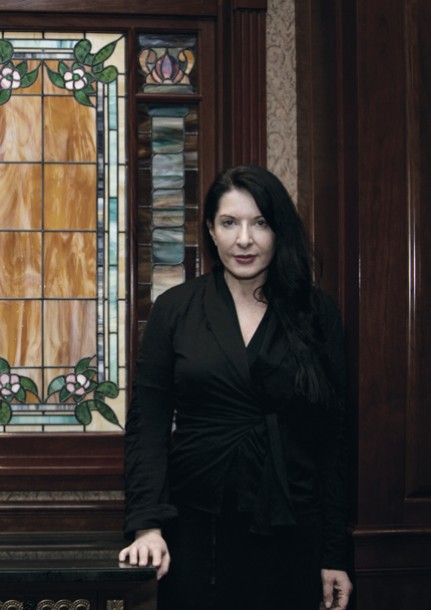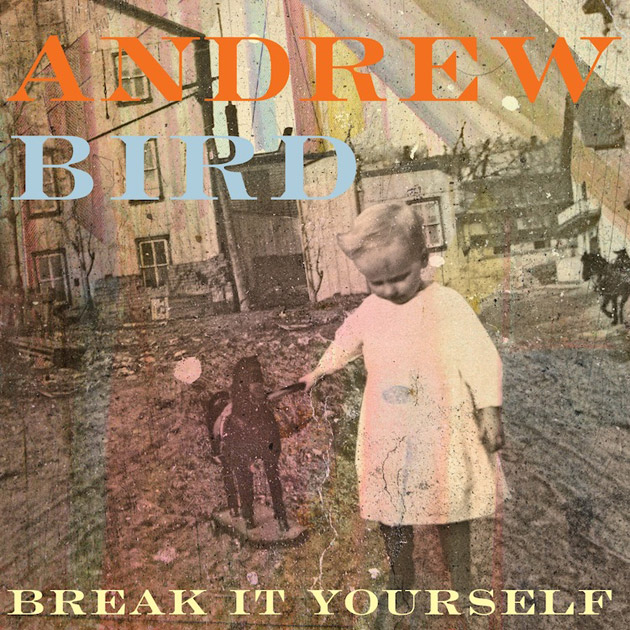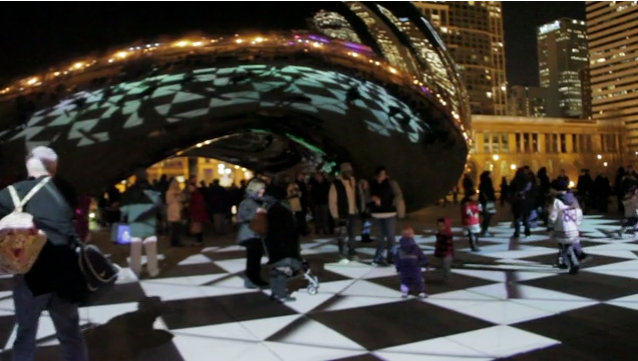Abramović’s contemporary pursuits are charged with the desire to preserve her legacy as a performance artist.

“The unknown is the most exciting place to enter. If we were afraid of the unknown, human beings would not discover the universe.”
Marina Abramović leaned back deep into the velvet couch. The 65-year-old Serbian artist, renowned for her interminable, grueling and often painful performances, explores the physical and emotional limits of the body as artistic subject. Born in Belgrade in the former Yugoslavia, Abramović began her artistic career as part of the pioneering generation of performance artists in the 1970s and over the past decade has risen to the controversial status of celebrity.
“The story of Columbus is a story of the unknown. He was sent by the queen of Spain to find a different way to India. At the time, the belief was that the planet was just a flat plate, so you could actually fall off. He sailed a boat manned by condemned convicts who had no fear of death – they were the only ones who would go with him.”
“They sailed for El Hierro, the last island in the Canary archipelago, and had a last dinner there. The next day they were going into the unknown. They risked falling off the earth. To me this is more interesting than going to the moon – the idea of falling into nothing.”
“They took this risk and discovered America. So you see, the unknown is very important to go into.”
In the 1970s a daring group of artists stepped into the unknown. Performance art challenged the bureaucracy and consumerism of the art market. “Attempting to create art that had no object, no remaining trace to be sold, collected, or otherwise ‘arrested,’” Stanford drama scholar and critic Peggy Phelan writes, “performance artists of the seventies were working against the accumulative logic of capital.”
“Performance art is the most immaterial form of art,” explains Abramović. “The memory is all that remains.”
“I remember my first painting lesson at the age of 14.” Abramović’s teacher was a military friend of her father who studied abstract painting in Paris. In the space of her small studio, the old man created a pile of torn canvas, glue, cement and pigment. He then poured gasoline over the canvas, lit a match, and everything exploded. “This is a sunset,” he said and left. “There was nothing left of the canvas, just a pile of ash on the floor. I understood then that the process is what is essential.”
Fluxus art historian Simon Anderson explains the anti-commercial focus of performance artists on the creative process: “Revealing the process of making art was a way of saying the art started before the product and it goes on after the product. Performance art is a way of challenging the boundaries of what is or isn’t art. Performance itself asks the question, ‘When did the art start? When do you get it?’ Part of the function of a lot of the work in the 1970s was to pull us up short before we made up our minds about what the art was.”
“Performance is a living form of art. If it wants to live, then we need to create a situation where performance can be re-performed.”
— Marina Abramović
Half a century later, the avant-garde has seeped into the sphere of the market, complicating the relationship between performance art and commodity. Abramović won the Golden Lion Award for Best Artist at the 1997 Venice Biennale, staged a seminal retrospective at New York’s Museum of Modern Art, starred in an autobiographical play “The Life and Death of Marina Abramović,” posed for the cover of Vogue, was featured in an episode of hit TV show “Sex and the City” and even designed a limited edition of Illy espresso cups.
“I spent my life working for performance to become mainstream,” Abramović explained in her interview with F Newsmagazine. “It’s happening right now, that is why I’m so busy.” It is one thing to be “alternative” when you are 20 or 30 or 40, she confesses to the camera in the 2012 documentary “The Artist is Present.” “But excuse me, I’m [65]! I don’t want to be alternative anymore!”
Abramović’s contemporary pursuits are charged with the desire to preserve her legacy as a performance artist. “I am interested in what will remain after I die.”

“I am creating a Center for the Preservation of Performance Art which will open in two years. Rem Koolhaas, the architect, signed a contract. I am creating something called the ‘Abramović Method,’ in which I will teach the audience and a young generation of artists how to perform. It is a very tough school – five days, no food and no talking. I have designed strict exercises that push the mental and physical limits of the body.”
Abramović is also an emphatic defender of copyright laws for performance art. “In the 1980s and 1990s, I saw how everyone stole from performance art. I was fed up with MTV, theater, music and fashion appropriating from performance art without giving credit. So I said OK, performance is a living form of art. If it wants to live, then we need to create a situation where performance can be re-performed.”
Until recently, performance art remained uncharted territory within the museum. “When they renovated the MoMA in 2004, I went right after it reopened,” says professor of Art History Daniel Merkle. “The first thing I noticed was the complete and utter lack of anything about performance art. I remember thinking there is nothing here – nobody who has done anything in performance between 1970 and 1990 is here.”
Abramović establishes re-performance as a model for preserving performance art. In the 2005 Guggenheim Museum exhibition “Seven Easy Pieces,” the artist reenacted seminal performances of Bruce Nauman, Vito Acconci, Valie Export, Gina Payne and Joseph Beuys from the 1960s and 1970s.
However Abramović’s efforts to obtain permission from the artists and their estates met with resistance. Re-performance called into question previously held convictions concerning the essentially transient nature of the art form, reflected in Abramović’s own proclamation of “no rehearsal, no repetition, no predicted end.”
Chris Burden refused permission to restage the 1974 crucifixion, in which he nailed himself to a Volkswagen Beetle. His secretary responded: “Mr. Burden is not talking publicly these days and he doesn’t give permission to repeat this piece or any other pieces.”
The self-proclaimed “grandmother of performance art,” Abramović insists the purpose of re-performance is not only the preservation of her own work but also to secure performance art’s legacy. “Nobody of my generation performs anymore and nobody is concerned with the survival of performance art. I’m the only one doing it.”
“You know, Abramović may well be the grandmother of performance art,” responds Anderson, “but some of the great grandparents are still going. I think her efforts to preserve performance art are admirable; otherwise the form has to reinvent itself with each new generation. It is hard for the medium to make real progress under such circumstances.”
Performance artist and former member of Goat Island Performance Group, Mark Jeffery defines re-performance as partly imitation, partly appropriation, partly homage. “For me it is about trying to connect within a lineage of art history and pose the question of what it means to reenact and re-contextualize performance.”
Smart Museum Chief Curator Stephanie Smith considers how to preserve performance art within the space of the museum. A collaborative performance by Abramović and her partner Ulay, “Communist Body/Fascist Body,” is currently on display as part of the group show “Feast: Radical Hospitality in Contemporary Art.”
“A question raised in an exhibition like ‘Feast,’” explains Smith, “is whether and how to represent performance art in the museum. There are obviously losses when one attempts to present these practices from within a museum but we can help a broader audience engage with the power of performance through documentation and artifacts, such as artists’ books, photos and video.”
“It is important to consider the shift between performance art in the 1960s and 1970s, when much smaller groups of people were trying to figure out what this new mode of art might be, and the present moment, where performance art is woven into the fabric of popular culture,” says Smith. “Marina has become a celebrity, name-checked in rap songs, and Lady Gaga is considered by some a performance artist. There is a wider field of popular discussion about performance art and the setting for its presentation is much larger.”
“I don’t have any time in my private life,” remarked Abramović, bemoaning her life of fame. “My life is literally on schedule, divided into 5, 10, 15 minute segments. I am a soldier.” As she reflects on the progression of her art from alternative form into the mainstream, she sighs. “Before I didn’t have time because I had to get where I am now. Now I don’t have time because I am where I am now.”








[…] talks about going mainstream and preserving her method of performance art. Check out the interview here and samples of her work below. Share this:EmailPrintFacebookTwitterStumbleUponTumblrLike […]
[…] “Enemy Kitchen.” Furthermore, the dish was effectively sprinkled with the delicious rumors that Marina Abramović was present inside. Given the unprecedented popularity of the show, I suppose the only thing hotter […]